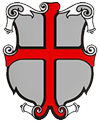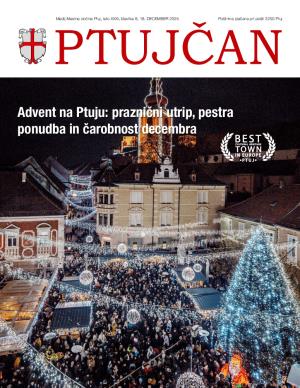Ptuj City Municipality
Ptuj City Municipality (Mestna občina Ptuj)
Mestni trg 1
2250 Ptuj
obcina.ptuj@ptuj.si
+ 386 2 748 29 99
INFORMATION
Mayor Nuška Gajšek
Surface 66,7 km2
Population 23.530 (1.1.2020)
Altitude 232 m
Statistical region Podravska
Number of settlements 10
Number of city quarters 8
Activity code 84.110 – General public administration activities
Registration number 5883598000
Bank account number SI56 01296-0100016538
Ptuj City Municipality
The largest municipality within the lower Podravje region, Ptuj City Municipality consisting of the town of Ptuj and adjacent settlements and villages plays an important role in different fields of everyday life of the citizens of the Administrative unit Ptuj. It is situated in the north-east part of Slovenia, in the centre of the Lower Podravje region bordering the region of Prlekija.
Ptuj is the oldest documented town in Slovenia. The entire town core is protected as monument.
The municipality is divided into ten settlements: Grajena, Grajenščak, Kicar, Krčevina pri Vurbergu, Mestni vrh, Pacinje, Podvinci, Ptuj, Spodnji Velovlek and Spuhlja
The town of Ptuj, as the regional centre at the national level, is an important hub of social infrastructure, care, services, an important economic centre and traffic intersection in which many vital public functions are being developed, such as the secondary and tertiary levels of health care, higher and tertiary education, research agencies and high judicial, administrative and social functions. Thus, the town of Ptuj aims to become the centre of administrative, economic, employment, educational, cultural, health and traffic activities in the Lower Podravje region.
The settlement of Grajena, located in the western hilly part of the municipality, is developing primary and also some tertiary and quaternary activities. The settlements of Podvinci and Spuhlja can be defined as rural settlements owing to the number of inhabitants and functions. The settlements Grajenščak, Kicar, Krčevina pri Vurbergu, Mestni vrh, Pacinje and Spodnji Velovlek are defined as villages regarding the number of inhabitants and the share of the population engaged in agriculture.
Ptuj City Municipality encompasses eight quarters: Breg-Turnišče, Center, Grajena, Jezero, Ljudski vrt, Panorama, Rogoznica, Spuhlja.
History of Ptuj
Ptuj begins its first chapter in the distant Late Stone Age.
In the Late Iron Age this area was populated by the Celts, the co-creators of Noricum who gradually urbanised the entire area.
Roman writers starting with Tacitus often mention Ptuj in connection with important events, ranging from the election of Vespasian to emperor in 69 AD, to the political activities of the grandfather of the last Western Roman emperor, Romulus, who was deposed in 476 AD. These records mark the historical period of Ptuj that became a self-governing unit around 103 AD known as COLONIA ULPIA TRAIANA POETOVIO, and reached its greatest extent in the 2nd and 3rd centuries; in 450 AD, it was burnt down by the Huns.
After the destruction of the Avar state at the end of the 8th century, the Podravje region and Ptuj were included in the Frankish state.
Between 977 and 1555, the town belonged to the bishops of Salzburg, and later on to the sovereign prince. Through time, Ptuj acquired schools, military installations, leather industry, wine trade, rail and road traffic systems, and organised tourist activities began.




